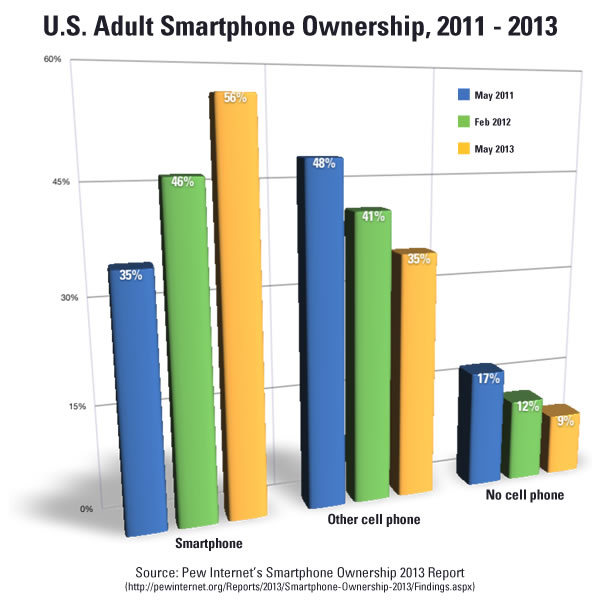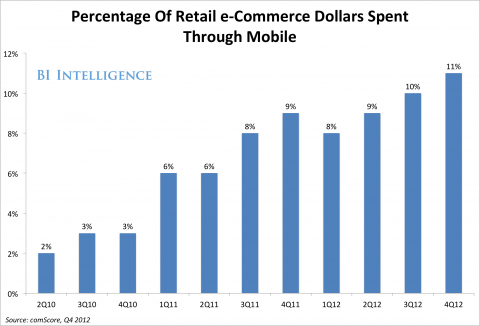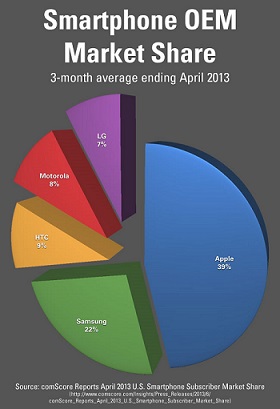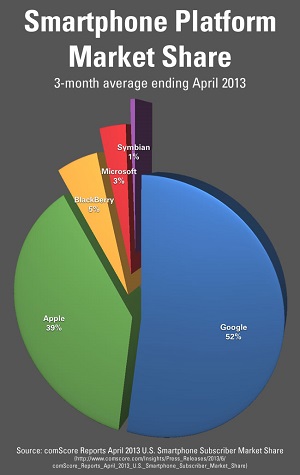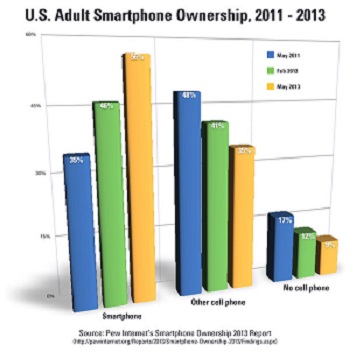It wasn’t that long ago that sitting down at your computer to go shopping online was a new trend and it was still just as likely someone would pull out a yellow pages book as to turn to yellowpages.com.au.
Nowadays, the e-commerce trend is here to stay. We explored some its aspects in our E-Commerce 101 Series. The world has now moved on from e-commerce as a new trend and is already embracing its predecessor m-commerce or Mobile Commerce. Mobile Commerce is the activity of buying and selling goods over the internet using handheld, mobile devices such as smartphones and tablets. It requires businesses to create a mobile website to specifically target these users.
The Growth Of Mobile E-Commerce
The graph above shows the incredible growth of consumers using mobile websites to do shopping since the introduction of the Apple iPad in 2010. From just 2% of total retail shopping to nearly 11% at the end of last year, mobile shopping has seen a large increase due to the popularity of products with larger screens such as iPads and faster internet connection speeds.
Is it really here to stay though? The below graph shows the growth of retail expenditure across the three different platforms; bricks-and-mortar stores (in-store), online using laptops or computers (e-commerce) and online using mobile devices.
The use of mobile devices for online shopping is growing at almost ten times the rate of traditional offline shopping! Users are turning to mobile and electronic devices rather than television and the newspaper for their news. In recent reports, manufacturers of computer devices revealed that they are now shipping more mobile devices than fixed or laptop devices for the first time in history.
Who Is Who
There are two components needed for a mobile device to search the internet. A piece of hardware, the actual phone and the operating system. Some providers, such as Apple, create their own hardware and their own software and do not let anyone else use it. Other providers, such as Google, create their own software but allow other retailers like Samsung use it on their phone.
Mobile Device Landscape
There are 5 main players in the mobile device landscape with the majority of the market share split between Apple’s iPhones and Samsung’s Galaxy’s phones.
Mobile Operating System Landscape
Again, here there are 5 main players offering software for mobile devices. Because Google Android can be used by any hardware developer it has wide popularity on the market whereas Apple’s iOS is only used on Apple iPhones.
Both Apple and Samsung/Android are growing in their market share every year, consolidating the duopoly and squeezing out the smaller players.
Finally, more and more adults are switching their old normal cellphones for smartphones which will increase the amount of business done through the mobile devices. Similar trends are taking place in tablets although the numbers are lower due to the fact they were only released a couple of years ago.
Mobile devices are not just here to stay they are the future of online retail. This means that businesses need to adjust their marketing methods to accommodate and incorporate mobile website design into their marketing strategy. Our next article in the series, Mobile Websites vs Mobile Apps, tells you just how to do that.

